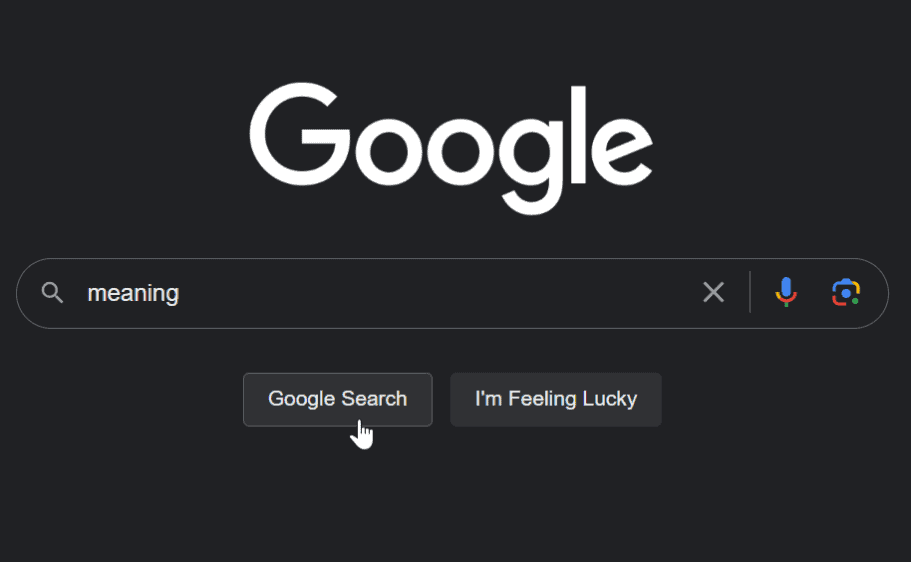Bite the bullets (A quick summary if you don’t want to read the whole article)
- What important truth do very few people agree with you on? This question can be applied to almost every part of business to find secret success.
- The Power Law: A tiny amount of effort in the right place can outweigh all other efforts. This pattern applies strongly to when making decisions.
- The magnitude of the power law is often misunderstood. For example, the last year of an exponential curve will be worth all other years combined.
- Sales is often underrated and underrepresented in successful companies. Good sales and distribution is enough to gain a monopoly.
- There are seven vital questions a company must get right to succeed. See them below under seeing green.
Quick link:
Savor the Summary
In Peter Thiel and Blake Master’s short and potent Zero to One: Notes on Startups, or How to Build the Future, the reader is constantly prodded to reflect on widely accepted conventions through a contrarian lens. The core of the book rests on the question: “What important truth do very few people agree with you on?” The authors propose that the answers to this question in different categories lead to the discovery of new industries and better choices in existing businesses. Some of the contrarian lessons of the dot-com bubble: It is better to risk boldness than triviality; A bad plan is better than no plan; Competitive markets destroy profits; Sales matters just as much as product.
In the book, monopolies are celebrated and defended again and again. Here, a monopoly is defined as: a company so good at what it does, no other firm can offer a close substitute. The characteristics of a good monopoly are: Proprietary technology 10x better than its closest substitute; Network effects; Economies of scale; Branding. Companies should leverage the power law and not ignore the importance of sales.
The concepts in the book are best summarized in the seven questions a company must get right to succeed: Can you create breakthrough technology (10x better) instead of incremental improvement?; Is now the right time to start this particular business?; Are you starting with a big share of a small market?; Do you have the right team?; Do you have a way to not just create but deliver your product?; Will your market position be defensible 10 and 20 years into the future?; Have you identified a unique opportunity that others don’t see?
What you can take from this book
Don’t follow the crowd
At the core of this book is the concept that you should trust your original thoughts even in the face of a mass of people who disagree. The question comes up again and again: What important truth do very few people agree with you on?
A good answer sounds like: Most people believe in x, but the truth is the opposite of x. Copying things that work and making them more is termed globalization in this book. The title of the book comes from the idea of new inventions. The concept of going from zero to one. This is how the author defines technology.
“How much of what you know about business is shaped by mistaken reactions to past mistakes?”
The business version of the core question is: what valuable company is nobody building? This is what is explored throughout the book.
Another concept that’s really hit hard is that competition is bad. The author argues that in perfect competition, no company makes a profit. He goes further to say that monopolies are a good thing. The definition of a monopoly in this book: a company so good at what it does, no other firm can offer a close substitute.
Characteristics of a “good” monopoly
- Proprietary technology that is 10 times better than it’s closest substitute.
- Network effects. E.g. If all your friends are on Facebook, you’re more likely to use it too.
- Economies of scale. It gets stronger with size.
- Branding. A brand should be built on a strong foundation, it’s not enough to just polish and design on top of a shoddy substrate.
How this applies to you: In whatever you create, you should aim for a 10x improvement on the “competition.” Your “proprietary technology” is actually what you bring to the table that is special and different. For instance, if you are an artist, your objective should be to create art that is 10 times better than your favorite inspiration. If you’re a real estate agent, you could create an experience for your clients that is 10 times better than the agents in your area.
Sounds hard? That’s because it is. This is a grounded way to take what you’re doing more seriously and get attention for whatever you choose to create. It’s a good tool to try to think bigger when you are limiting yourself.
The concept of a “network effect” is valuable as well. Another way of thinking about this is “community effect.” It’s not enough to make good things, you are going to eventually rely on the network or community that consumes that thing. If you do something so awesome that people tell their friends about you, that’s a network effect. (Even if it’s just the best kickflip someone has ever seen, if they tell their friends you’ve created a node in a network. It’s that simple.)
The concept of economies of scale is valuable too. The idea is: the cost per unit of something decreases when you do or make more of it. This applies less to other fields than business, but is a tool to remember as you start to “scale out” of a given role. If you’re an artist, and people start buying so much of your art that you can’t keep up, it might be time to stretch into a different medium that more people can consume; like digital media or video.
Finally, branding is the thing that only you are capable of adding to whatever you do. Brand makes whatever you work on stand out. It makes it memorable. When you’re completely honest and bring yourself to a project, that adds brand. No amount of expensive design can make something have a brand. It’s got to be built in from the core.
Luck and the future
Is success due to luck? Not according to the author. To break this question down, there are four perspectives you could take on the future:
- Indefinite pessimism.
- The future is unpredictable and probably bad. This is the nihilist/hedonist mentality.
- Definite pessimism.
- The future is predictably bad. This is the doomsday prepper mentality.
- Definite optimism.
- The future is within our control and can be made good. This is the engineer’s mentality.
- Indefinite optimism.
- This is the prevailing attitude of America today and the mindset that chance wins most of the time.
The way to build the future is to be a Definite Optimist when making decisions. In practice, this looks like making a plan based on hard thinking about what the future holds, and having the confidence that our actions can impact that future. If you have a strong idea for why something is good and are able to act on it, that’s a stronger stance than just hoping things are going to turn out well.
Definite optimism is trusting in yourself more than you trust chance or fate. If that sounds bold or heretical, maybe you don’t believe in yourself as much as you could.
The Power Law
Everyone is an investor. Whether you’re investing time or money, you need to make choices in the hopes that those choices will lead to positive future outcomes. Sometimes, you can leverage a small amount of input to have a huge return. This is the concept of the power law. The thing that’s hard to grasp is the magnitude.
The example in the book is that investing in startups is hard and counterintuitive because it follows a power law. A single startup in an investor’s portfolio can outweigh all of the other investments combined. That’s how powerful power law returns are.
The take-home: When you’re choosing what to do, don’t try to do everything and hope something works out. Instead, focus heavily on the causes and effects of each decision, and invest time in the decisions that can outweigh all others.
Secrets
According to the book, the trick to answering the core question is to look for secrets. There are two kinds of secrets: ones about nature and ones about people. Secrets about nature are found by pursuing things like a deep understanding of physics. Secrets about people are underrated. These are found by interrogating basic conventions. For instance, you might ask: “what are people not allowed to talk about?” When you find a secret, tell only who you need to tell and no more.
The author presents a “secret” later in the book that most people are average and fall into a normal distribution. Creators seem to fall into an “inverse normal distribution” also called a “u-shaped curve.” This means they have seemingly opposing traits. For instance, extremely smart, but unable to drive a car. The valuable piece of this secret is that you should focus and lean into your strengths rather than worry extensively about your weaknesses.
“A great company is in a conspiracy to change the world; when you share your secret, the recipient becomes a fellow conspirator.”
Sales
Most of this section applies to businesses. If you’re not interested in selling a product, skip it.
Before reading this for the first time, I thought of sales as an icky business. Here, a strong argument is made that sales is an important skill for everyone and great sales is a hidden superpower. Superior sales and distribution can be enough to win when creating something. This is not true for a good product without good sales and distribution.
The king of sales and distribution decisions is Customer Lifetime Value (CLV) compared to Customer Acquisition Cost (CAC). Easy to remember: a CLV greater than CAC equals profit.
According to the author, there is a continuum of distribution from viral marketing to complex sales. For scale: viral marketing sits at an average price point of about $1 to $10 per unit. Complex sales hits seven figures or more.
Here are the categories broken down:
- Complex sales
- Requires extremely high touch and perhaps the CEO of the company to navigate the entire sales process. However, this is possible because you may only need to sell one unit per year and grow at a rate of 50% to 100% each year.
- You need to cater each sale to the individual customer with this sales process.
- Personal sales
- Average deal sizes between $10,000 and $100,000 are not complex, but will require a process and a sales team.
- Dead zone
- A product that is priced ~$1,000. The reason is that it requires a high touch for people to buy it and the price doesn’t justify the effort to sell it.
- Don’t price products in this range as a small business.
- Regular “marketing and advertising” distribution
- Works for low priced products that can’t be distributed virally. This could be physical product that’s sold in stores.
- Word of warning: no startup can match big companies’ budgets for marketing and ads.
- Viral Marketing
- Defined by a product that leverages users as distribution, by sharing it with friends. Facebook is a key example of a product that did this well because when it was shared with friends they in turn shared it with their friends.
- “Whoever is first to dominate the most important segment of a market with viral potential will be the last mover in the whole market.”
How it applies to you: it’s important to recognize that one of these methods of distribution will have a power law impact for your business. Figure that out and focus on that one. In addition, it’s vital to sell yourself, your business and your message. Every moment you interact with other people who could benefit from what you do is a chance to get better at sales.
“Look around. If you don’t see any salespeople, you’re the salesperson.”
Seven questions a business must answer
According to Thiel, every business must answer seven crucial questions correctly to succeed.
- The Engineering Question: Can you create breakthrough technology (10x better) instead of incremental improvement?
- The Timing Question: Is now the right time to start this particular business?
- The Monopoly Question: Are you starting with a big share of a small market?
- The People Question: Do you have the right team?
- The Distribution Question: Do you have a way to not just create but deliver your product?
- The Durability Question: Will your market position be defensible 10 and 20 years into the future?
- The Secret Question: Have you identified a unique opportunity that others don’t see?
The author states that if you can answer all of these questions correctly, you will be able to build a successful company. If you fail to answer these, you will almost certainly fail.
“Above all, don’t underestimate your power as an individual.”
Criticism
I’ve read this book several times and it took me an embarrassing number of attempts to put this summary together. It’s because I have a love-hate relationship with the concepts within. The single best thing I’ve taken from this book is the specific flavor of hard thinking to determine “first principles.” This is something that Elon Musk has specifically advocated in interviews. Since then, it has become somewhat of a mantra in Silicon Valley (where I work). I’ve found that many people are excited about the idea of first principle thinking, and in the next breath go and copy something someone else is doing. The contrarian perspective is really powerful in determining what to focus on.
The next best concept is a strong understanding of the power law. This distribution is all around us, but when misinterpreted it seems to cause sadness and anger. When you hear about the 1% owning more than the other 99 you can get upset or recognize that it’s due to a straightforward principle. I’m not saying it’s fair, in fact, I’m saying that this the truth about how things become unfair.
One of the more frustrating parts of this book is the very simple model of competition and monopoly. Sure, it’s contrarian to say that competition is bad and monopolies are good. To say that “competition is an ideology” is sort of like saying “age is just a mindset.” Yes, in a lot of ways it’s true, also when you get old enough, you die. What’s expressed here is not the colloquial definition of Monopoly. No one would disagree with someone claiming that a company should build something so good that there is not a close second. Conventional monopolies of the past weren’t from geniuses inventing a new whizgig, but someone finding all the oil in one place. These types of monopolies are ignored in the book.
Not to get too philosophical: competition is a structural part of our universe. It’s a pattern that, at least to me, isn’t good or bad. It’s an agent of change. Competition is never good for the competitors, but is the force behind why we have consciousness. You could think of chemical reactions as competition between atoms based on concentrations of substrate. This is a business book, so of course it deserves a lot of leeway.
Overall, I find that the book leans heavily on armchair thinkin’ rather than well grounded facts. It’s hard to listen to a privileged billionaire who went to Stanford tell you that luck doesn’t have anything to do with success. However, that doesn’t take away from the core strengths. A friend and colleague called this book a “good mind expander for when you’re not thinking big enough”. I hands-down agree. It’s inspiring and provides valuable heuristics; especially if you’re exposed to them for the first time.
Once again, the two most valuable tools are: 1) the contrarian question as long as it’s used wisely and 2) the basic understanding of the power law. Once you really get this pattern, you start to see it everywhere and it’s a huge advantage in decision making. If you read only one chapter, I recommend the chapter on sales. In my opinion, it is a glowing example of positive alternative thinking and a useful of tactics for building up a business.
“The essential first step is to think for yourself.“



